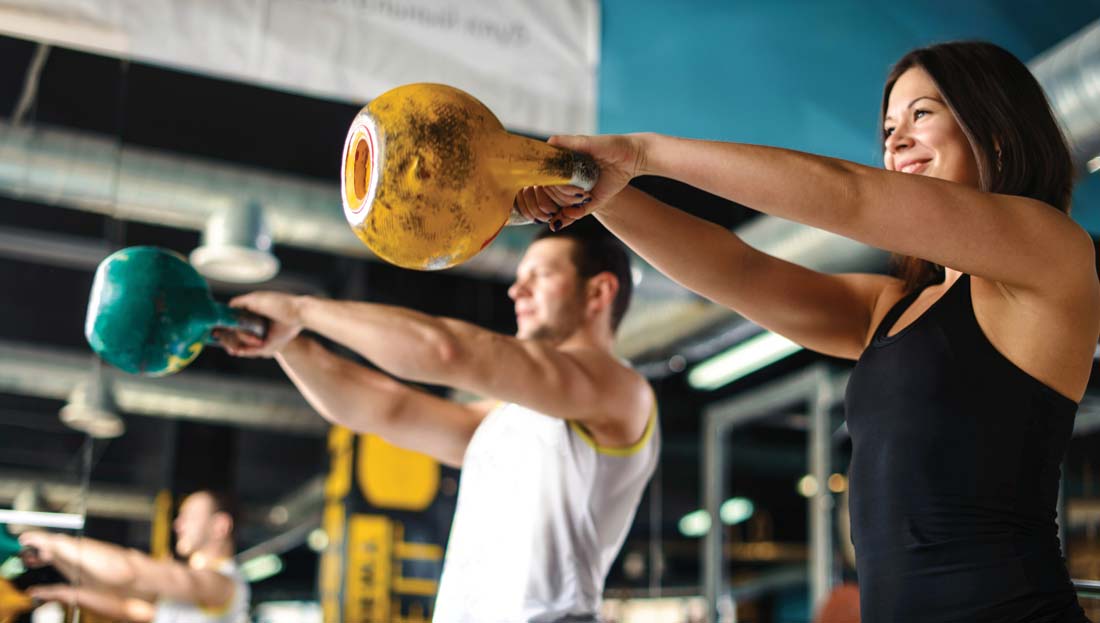
Study: Muscular Training Effective for Reducing Body Fat

If you ask most people about exercise, they’ll likely tell you that you need to lift weights to increase strength and get bigger muscles, but you must do cardio workouts if you want to lose fat. Of course, it’s not quite that simple or clear cut, a fact that was reiterated after the release of a recent study, which found that a person can lose about 1.4% of their total body fat through muscular training alone. This, according to researchers, is similar to how much one can expect to lose by doing cardiorespiratory activity.
Researchers from the University of New South Wales (UNSW) arrived at this conclusion after conducting a systematic review and meta-analysis of existing research. Their findings were in the scientific journal Sports Medicine.
“A lot of people think that if you want to lose weight, you need to go out and run,” says senior author of the study Dr. Mandy Hagstrom, an exercise physiologist and senior lecturer at UNSW Medicine and Health. “But our findings show that even when strength training is done on its own, it still causes a favorable loss of body fat without having to consciously diet or go running.”
Up until now, the link between strength training and fat loss has been unclear. Studies have investigated this link in the past, but their sample sizes tend to be small, which has been attributed to the fact that not many people want to volunteer to exercise for months on end. Smaller sample sizes can make it difficult to find statistically significant results, especially as many bodies can respond differently to exercise programs.
“It can be really difficult to discern whether there’s an effect or not based on one study alone,” explains Dr. Hagstrom. “But when we add all of these studies together, we effectively create one large study, and can get a much clearer idea of what’s going on.”
A Consensus Emerges
Dr. Hagstrom and her team pulled together the findings from 58 research papers that used highly accurate forms of body-fat measurement such as body scans, which can differentiate fat mass from lean mass, to measure the outcomes from strength-training programs. Altogether, the studies included 3,000 participants, none of whom had any previous weight-training experience.
While the muscular-training programs differed between the studies, the participants worked out for roughly 45 to 60 minutes per session, for an average of 2.7 times per week. The programs lasted about five months.
The team found that, on average, participants lost 1.4% of their total body fat after their training programs, which equated to roughly 1.1 pounds or half a kilo in fat mass for most participants.
Busting the Fat-loss Myth
Part of the reason many people think strength training doesn’t live up to cardio in terms of fat loss comes down to inaccurate ways of measuring fat, says Dr. Hagstrom. For example, many of your clients likely focus on the number they see on the scale—that is, their total body weight. But, as you well know, this figure doesn’t differentiate fat mass from everything else that makes up the body, such as water, bones and muscles.
Cardiorespiratory training offers numerous health and functional benefits, including fat loss, but most cardio-focused activities don’t result in significant muscle gain. “But when we strength train, we gain muscle mass and lose body fat,” explains Dr. Hagstrom. For this reason, the numbers on the scale may not change but the overall composition of body mass, body shape and circumference measurement may change because muscle is denser than fat.
The research team focused on measuring how much the total body-fat percentage changed after strength-training programs. This measurement showed that fat loss appears to be on par with aerobics and cardiorespiratory training, despite the different figures on the scales.
“A lot of fitness recommendations come from studies that use inaccurate measurement tools, like bioelectrical impedance or scales,” says Dr Hagstrom. “But the most accurate and reliable way of assessing body fat is through DXA, MRI or CT scans. They can compartmentalize the body and separate fat mass from lean tissue.”
While this study didn’t show whether variables such as exercise duration, frequency, intensity or set volume impacted fat-loss percentage, the team hope to next investigate whether the way in which strength training is performed can change the amount of fat loss.
A Better Way to Measure Progress
As part of their study, the team conducted a sub-analysis comparing how different ways of measuring fat can influence a study’s findings.
Interestingly, it showed that when papers used more accurate measurements such as body scans, they tended to show lower overall changes in body fat.
“Using accurate fat measurements is important because it gives us a more realistic idea of what body changes to expect,” says lead author of the study Michael Wewege, a PhD candidate at UNSW and Neuroscience Research Australia. “Future exercise studies can improve their research by using these more accurate body measurements.”
What the Research Means for Health and Exercise Professionals
Reframing the way we measure progress doesn’t just apply to exercise science researchers, but to everyday people, too.
“Resistance training does so many fantastic things to the body that other forms of exercise don't, like improving bone mineral density, lean mass and muscle quality. Now, we know it also gives you a benefit we previously thought only came from aerobics,” says Dr. Hagstrom. It’s also important to remind clients not to focus too much on the number on the scale because it isn’t always the best indicator of results. Instead, urge your clients to think about their body composition, how their clothes fit and how their body will start to feel and move differently.
While the findings are encouraging for fans of resistance training, Dr. Hagstrom says the best approach for people who are aiming to lose fat is still to eat nutritiously and follow an exercise routine that includes both cardiorespiratory and muscular training.
However, if you have clients who are resistant to participating in cardiorespiratory activities, either because they simply don’t enjoy it or for some other reason, the good news is that they can reap many of the same benefits through various methods of muscular training, including fat loss. After all, the most effective exercise a person can do is the one they’re most likely to stick with. And the one they’re most likely to stick with is the one that they enjoy.

More Articles
- Certified™: December 2021
It's Time to Introduce Your Clients to High-intensity Functional Training
- Certified™: December 2021
How to Become a Successful Health Coach: Your Most Common Questions Answered
Contributor




 by
by 

